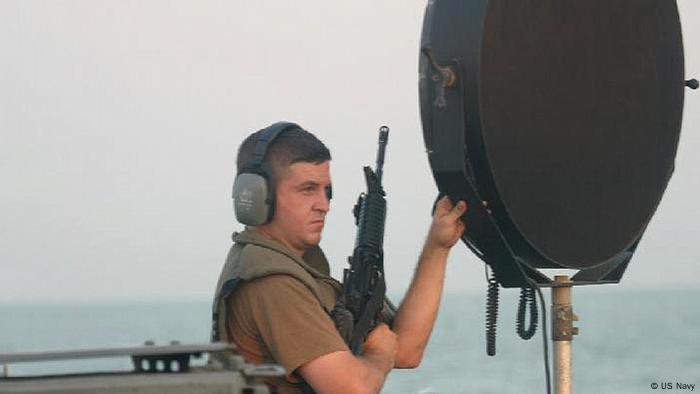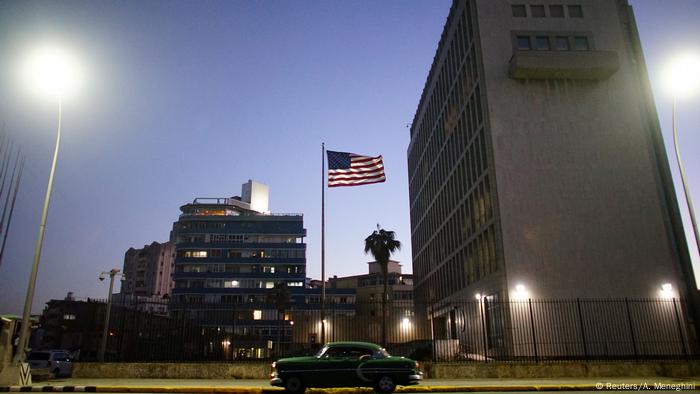Sound as a dangerous weapon: Happiness is a warm sonic weapon – My Comments
[This is the soft type of stuff the cops use. But I have heard of, and read about sound as a means of killing people, but it seems to be undocumented. I suspect only the military types know about this. This article does discuss some strange stuff that is of interest. Jan]
Sound is a powerful device. It’s used in war to disorientate the enemy, and in cities to hold back protesters or disperse "loitering" teenagers. Plus, it’s "media friendly." So is sonic weaponry better than a gun?
We are swimming in sound. It’s everywhere, virtually impossible to escape. Ask yourself when you last heard silence. I mean absolute silence. See what I mean? Even when I close my eyes, press my ears shut, and think it’s "oh, so quiet," like Björk in a yellow dress, I can still hear the blood pumping through my temples like a dull but incessant alarm.
Our ears and brains are in receive-mode 24/7, whether we like it or not. Sometimes we can’t even hear the sounds, though we still feel them.
And that’s why sound – in all its variations – is such a darned effective tool. It’s a warning, a "non-lethal" weapon, a call to arms and a call to mind the closing doors. We respond to these signals, even if we choose to ignore them, especially when they are loud. But why?
"Well, first we’re talking about 110-120 decibels" says Peter Ludewig, managing director at Standby Pintsch Bamag, which makes acoustic warning devices for law enforcement and public transport. "That’s why they’re effective."
And then there’s the recognition value – we recognize certain signals as telling us certain things.
That’s also why German emergency services have stuck with the two-tone Martinshorn signal even though the American "Yelp" siren covers a much broader frequency range and can be heard by more people, even those with some hearing loss.
Run, baby, run
Some warning signals are used less to help us than intimidate us. They are louder, or have a higher decibel range. They emit sound with much more force, and that at painful frequencies.
They are known, euphemistically, as "non-lethal" weapons. But we’ve all heard of fates worse than death, and that may be why Long Range Acoustic Devices (LRAD), as used by the Israeli Defense Force against protestors, and by US police for crowd control.
They may well be "non-lethal," but there’s no pretending they are harmless. They can cause physical sickness and other pain.
Our ears, and those of other animals, are incredibly sensitive. They have to be sensitive to pick up warning sounds, like rumblings in the jungle.
"The mechanical energy in natural sounds is unbelievably small – a blade of grass weighs almost nothing – and so for our ears to do the job they were designed to do, they have to be shockingly sensitive," says Jan Schnupp, a professor in neuroscience at Oxford and Hong Kong City University. And that in turn makes our ears very vulnerable.
"If you have sound sources that are incredibly intense, like a jackhammer, a rock concert or a jet engine at takeoff," continues Schnupp, "they will simply overload this mechanical system, and break it. And they can break it permanently."
The point of pain
A German company called PKI makes an acoustic warning device that "immobilizes everyone approaching you nearer than 200 meters" with a directed audio signal that "attains [an] absolute threshold of pain." The PKI website says they offer a range of anti-terror equipment, which is "easier for government departments to find and purchase discretely." [my italics]
Which says it all. And that’s just as well, because PKI’s managing director, Peter Klüver, declined to comment on the record.
"Why wouldn’t you want to talk about the PKI 7430, isn’t it legal?" I asked an assistant at the company. "Oh, they’re legal," she replied, "but they’re mainly for the foreign market."
I’m left wondering why we use sound when it’s legal (no matter how we feel about the justice of it all) for some law enforcement agencies and armies to use force, and in war to kill people.
"It’s very media friendly, isn’t it? If you think about the effects of what are called ‘non-lethal weaponry,’ you can’t capture that on film, on newsreels, in photographs, in newspapers," says Dr Toby Heys, Future Technologies Research Centre Leader at Manchester Metropolitan University.
"Seeing a child or an adult being hit by a baton and blood coming out of their body or head or whatever is a very arresting image and often very detrimental to the attempts of the police force or military or whoever is trying to control a certain aspect of society," says Heys.
Long Range Acoustic Devices (LRADs) are used to ward off pirates on the high seas, and against civilians in cities
"But if it’s done by a sound, it’s very difficult to see. We are an ocular-based culture. And we see what we believe [sic]. If we can’t see it, it doesn’t have as much credence."
Cochlea controversy
Over at the US State Department, however, top officials have found an earful of credence in a story that many auditory experts, including Heys, doubt is true.
As of October 3, the state department says 22 US diplomatic staff at the US Embassy in Havana, Cuba, are "medically confirmed to have experienced health effects" due to alleged sonic attacks, possibly transmitted via telephone handsets. Staff were initially said to have suffered brain damage, vertigo, hearing loss, and later an inability to recall certain words.
The US State Department says 22 of its diplomatic staff have suffered health issues since "the attacks" in late 2016
The details are sketchy at best. Investigators are "unable to determine who or what is causing these attacks." But since the first word of the case surfaced in August, there’s been all manner of diplomatic fluttery and speculation.
Some have even speculated the attacks were inaudible. And that’s got auditory experts in a fizz, because, they say, that’s just not possible.
"Everyone who’s been interviewed on this is on the same page. And at the moment, I don’t think anybody knows of any technologies that could produce the effects that have been talked about by the US State Department," says Heys.
Sounds of sickness
The notion of an inaudible sonic attack is not total fantasy, however, as lower, bass frequencies, known as infrasound, can make you feel nauseous without your necessarily hearing them. You’d still feel something "visceral," though, or hear your surroundings shake.
"But even then it’s hard to see how it would cause damage to the structures of the inner ear," says Schnupp. "They are designed to register sounds and if they don’t register the sounds, it’s because the sounds aren’t having an effect. You know, you can’t overload nerve cells if you don’t put a load on them."

Schnupp says the idea of an inaudible sound weapon that causes damage to the inner ear "incredibly contrived."
"It’s pretty implausible," agrees Heys. "Infrasound is also very difficult to direct. Ultrasound, that’s above 20,000 Hz, is very directional. But infrasound is non-directional, because its natural propensity is to spread out and through walls. Everybody around would feel the same thing."
But, alas, not everyone in Havana did feel the same thing.
"I mean, if you were to take a person and anesthetize them, bolt their head down and focus some ultrasound energy from specialized loudspeakers to pinpoint some point, then sure …" says Schnupp. "But, erm, if you’ve already pinned them down like this, why not stick a needle in?!"
From Jericho to teens
One of the earliest stories of sound as a weapon is the Israelites’ attack on the walls of Jericho. It’s said they blew their trumpets as they marched around the city and "the walls came a-tumbling down." But this biblical tale is often disputed, much like the current US-Cuba affair.
Perhaps the most pernicious use of sound is when it’s deployed militarily in psychological operations (PSYOPs) to disorientate the enemy, such as in Operation Wandering Soul (also known as Ghost Tape Number 10) during the Vietnam War.
PSYOPs is a curious field of work that spans deception tactics to torture. If you’re interested in working in PSYOPs, your duties may include operating "loudspeaker systems, state of the art computers, analog and digital recording and playback devices," according to a job advertised on goarmy.com. And if that’s accurate, a death metal playlist may well be a competitive advantage.
Sound weaponry is not merely for traditional war zones, though. It’s also deployed in urban settings to control "loitering" teenagers. The "Mosquito" teen deterrent device has been used in the UK for about 10 years by shop owners, homeowners, local authorities, and … McDonalds. It emits a piercing, buzzing tone that only teenagers can hear (17 KHz). Adults lose the ability to hear the frequency as our ears change shape when we age.
"But teenagers can still hear them. So for them it’s very annoying!" says Heys.
The Mosquito Device is sold by Compound Security Systems, a company that is very keen to stress it "[abides] by international human rights legislation."
But despite agreeing to an interview, all I got to hear after nine attempts on the phone was my interviewee absent-mindedly singing "It’s such a perfect day," before I said "heellooo," and he snapped back to reality and hung up.
I’ve tried a further five times, but never again did I hear his dulcet tones. Fortunately, the kids have an answer for this kind of technology: subversion.
"Teenagers will often use very high frequencies on their cell phones so that when they’re in classrooms, for example, they can hear when they receive a message but the teacher can’t, because the teacher can’t perceive that frequency range," says Heys. "It’s a lot less insidious than things like Mosquito which is a form of geographic and territorial … warfare
Source: https://www.dw.com/en/happiness-is-a-warm-sonic-weapon/a-40907319



